Last week, we looked at production photographs for Chicago-based Laughing Stock Theatre’s hilarious traditional commedia show, Over My Dead Body; or, How to Distribute Generational Wealth. This week, we take a second look at the characters in the show and a series of special Renaissance style commedia portraits for these characters.
This secondary portrait series occurred as a result of a conversation with Laughing Stock ensemble member Jennifer Mohr last spring, before she traveled to Italy for the summer to participate in (the show’s director and creator) Antonio Fava’s commedia workshop. We’d been hanging out weekly, playing the Sentinel Comics RPG together (bookmarked as a story for another time) when Jen brought up the idea of Distant Era coming in to photograph this show in the fall. As Jen told the story, this celebrated commedia master had dedicated a lifetime to the craft, and after the summer workshop in Italy he’d come to Chicago to direct Laughing Stock’s show in the fall. Thus, there was an extra gravity to the workshop and the show Laughing Stock produced. This was to be something special.
As Jen described the show, I thought back on golden late summer afternoons performing improvised commedia at the Ohio Renaissance Festival in the 1990s. And of a time before that when I first learned about the form in professor William Condee’s class in the theatre school at Ohio University. As a former player, I’ve long felt an affinity for this kind of work. As Jen described the event, images of masked players materialized in my imagination, and I wondered about what they might look like as portraits if we were able to make such a thing. Well, we did make them, and here they are!
The Commedia Portraits
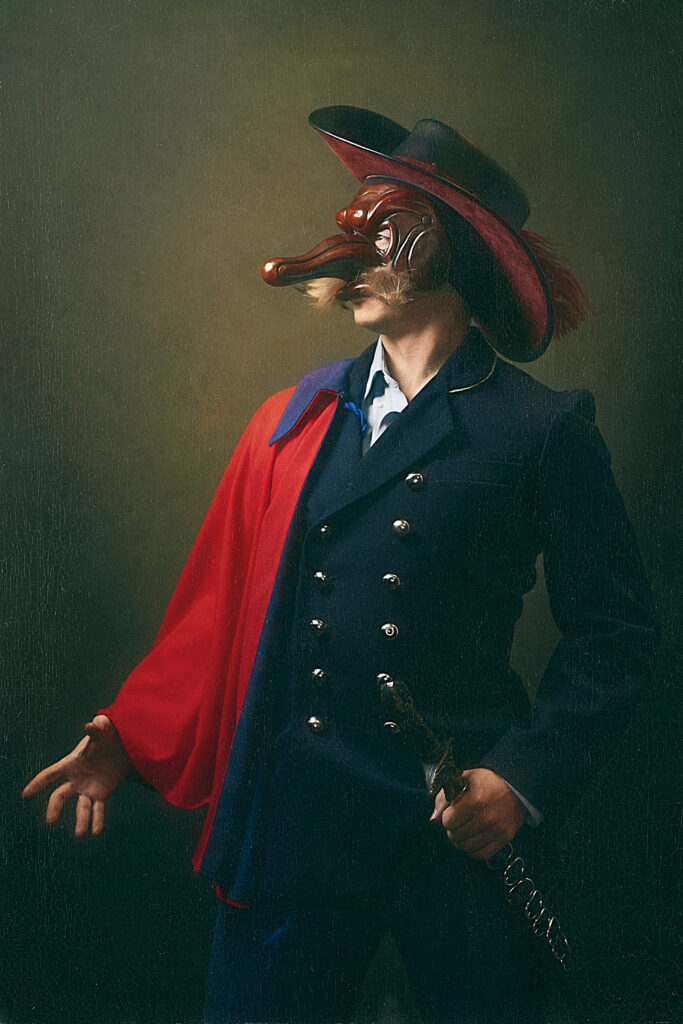
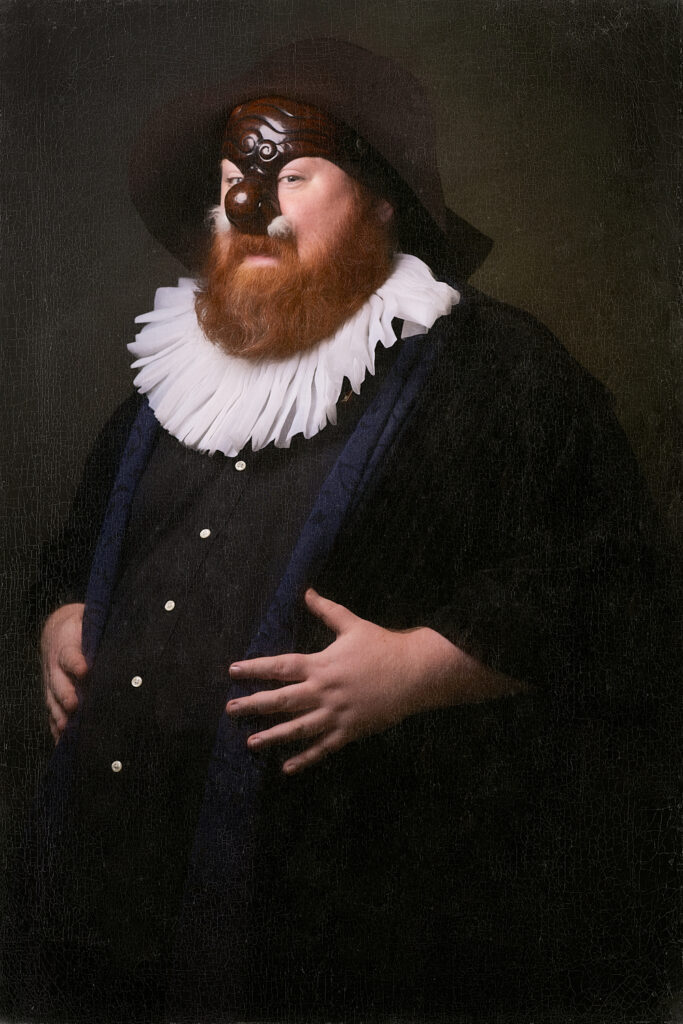
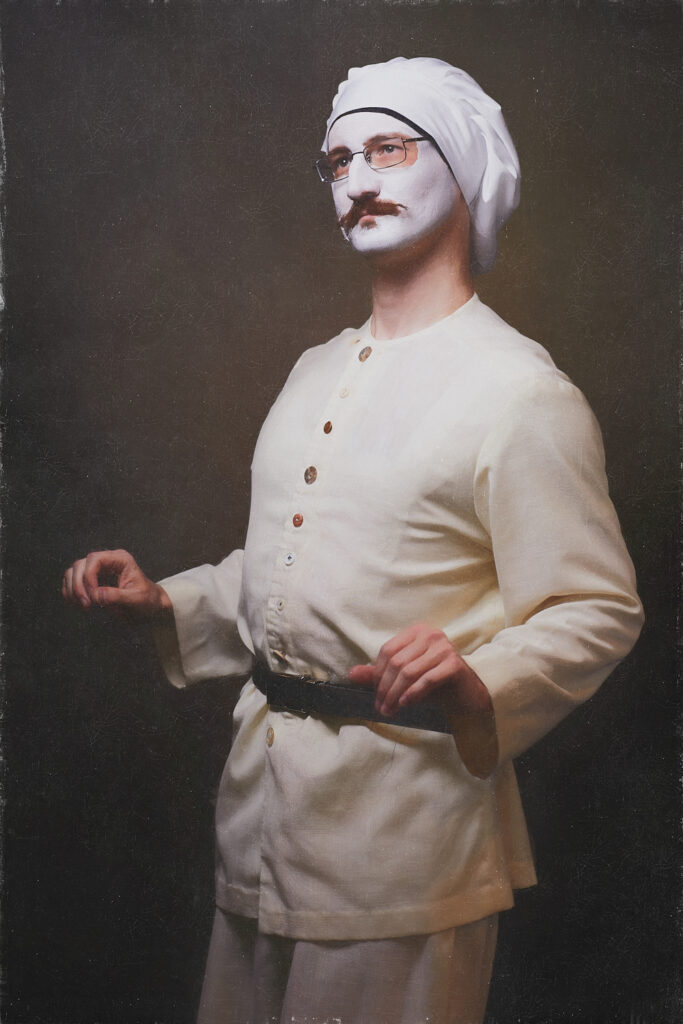

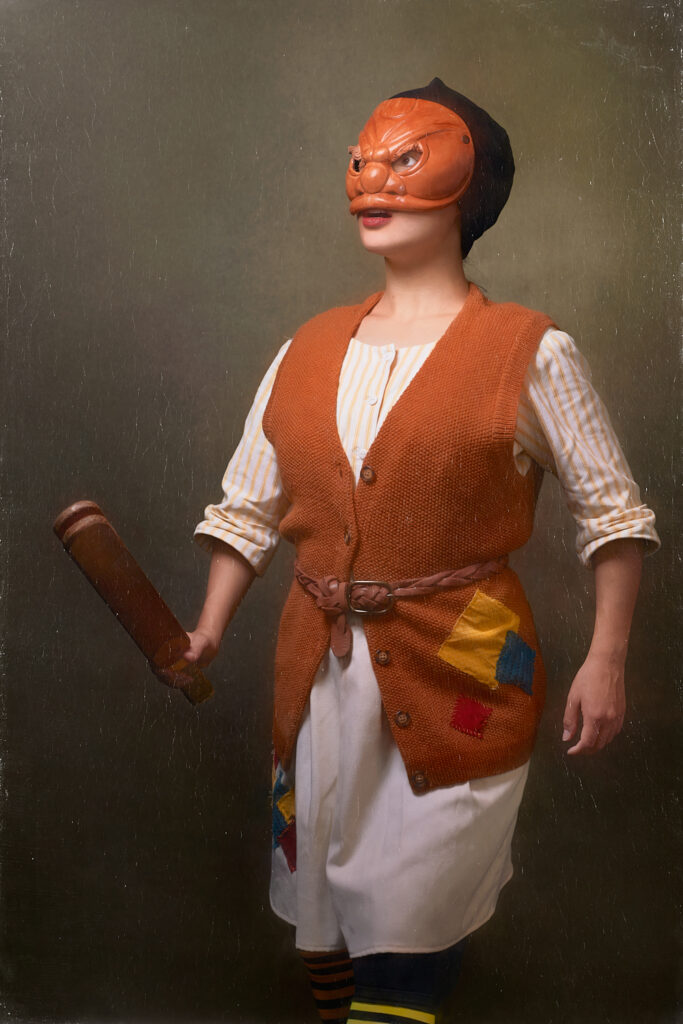
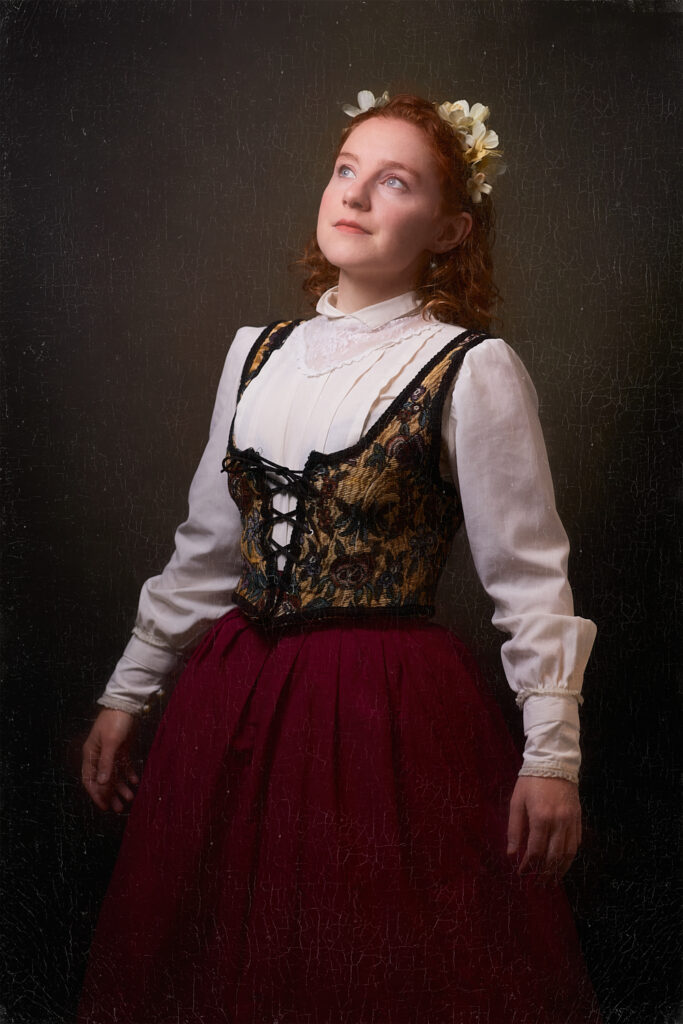
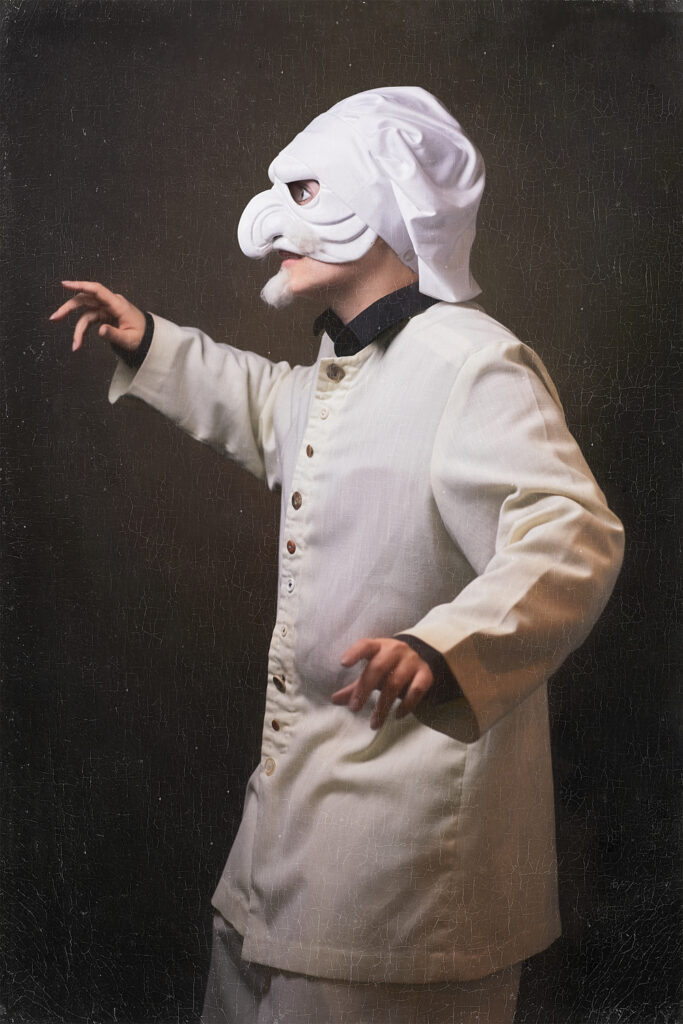
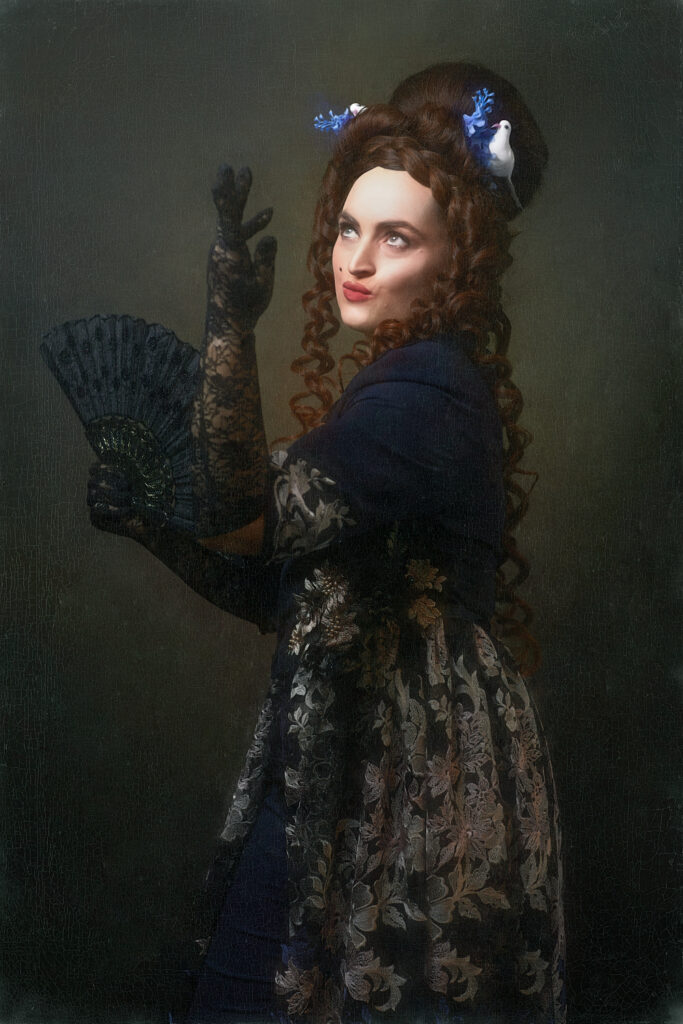
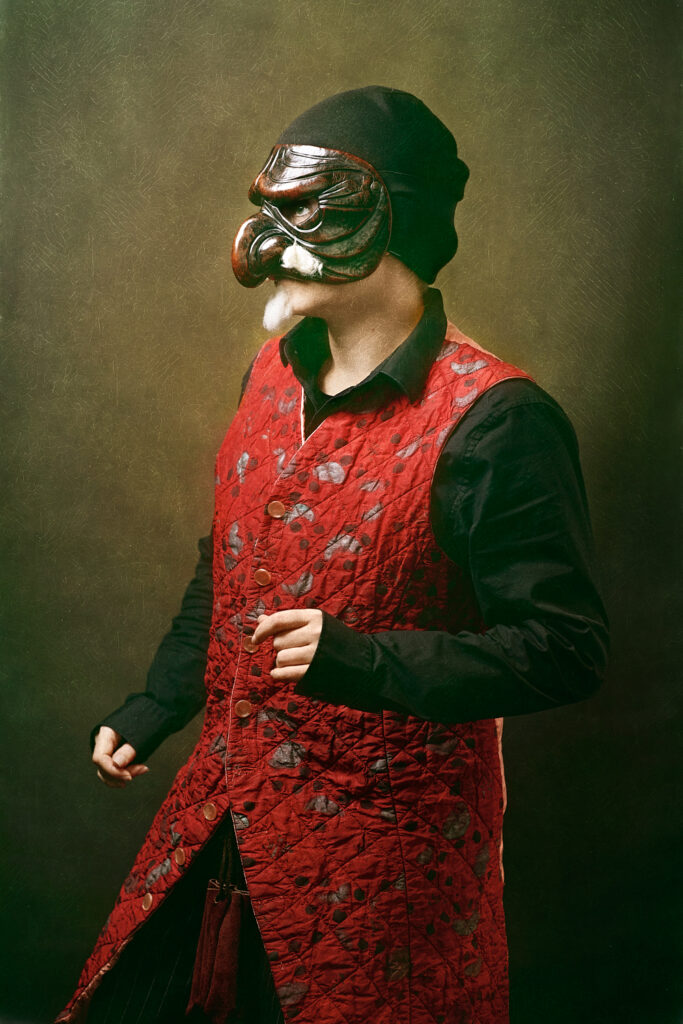
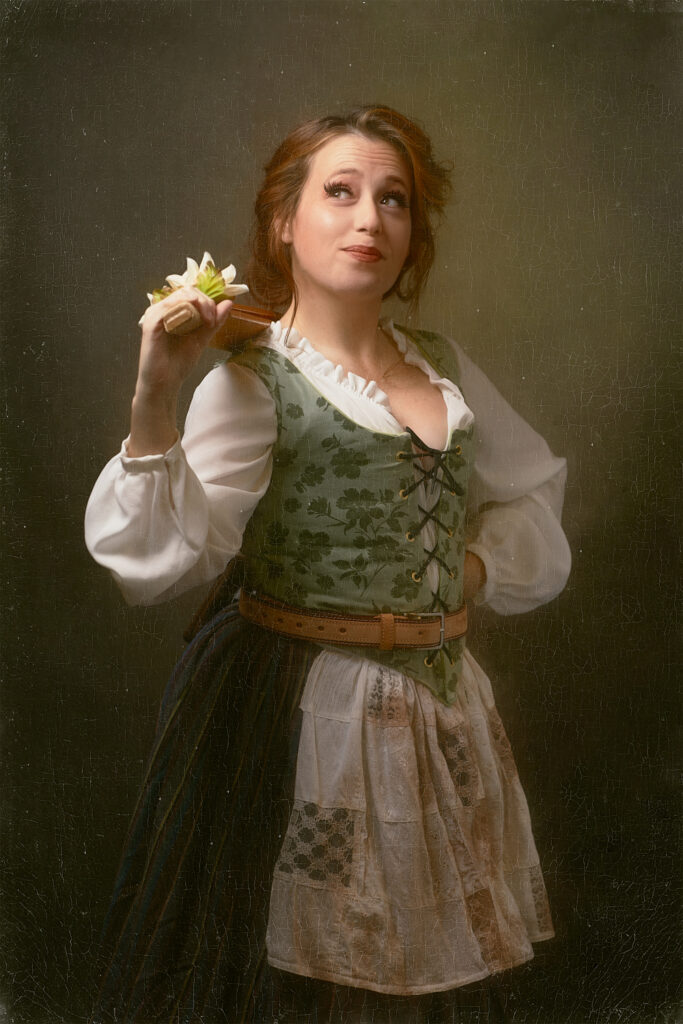
SECOND ROW: Fulgenzio (Martin Downs), Zanetta (Shea Lee), Flaminia (Helena Scholz-Carlson).
THIRD ROW: Pantalone (Claire Proepper), Signora Rosaura (Jordan Scherer), Pantalone 2 (Claire Proepper).
FOURTH ROW: Smeraldina (Jennifer Mohr).
The Characters of Commedia
The information in this section was contributed by Aaron Quick, producer of Laughing Stock Theatre. It provides context for the character portraits above.
Masks
In classical Italian, “maschera” refers to both the physical object of the mask as well as the character type the mask represents. Thus even non-masked characters can be considered “masks.” The mask “spectacularizes” the human face, and so commedia actors spectacularize the human form and the human condition of the characters, making commedia larger than life.
Zanni (Servants)
The bulk of the comedy in commedia comes from the servant characters, or “zanni.” Classically, the zanni are migrant workers new to the city where the play takes place. They are not stupid, but they do not speak the local language or know its customs, so they are easily taken advantage of and easily confused. In our modern interpretation, they tend to be day laborers, TaskRabbits, gig workers, etc. The working class just trying to get by.
Second Zanni
Antonio Fava breaks characters into paired sets, where there are first and second versions of every type. The second zanni is the best known zanni in commedia, and includes the characters Arlecchino, Truffaldino, and in this show Zanetta. They tend to be less intelligent and more naive than the first zanni.
First Zanni
The first zanni are worker characters who have scraped enough money together to appeal to the women of the house. They handle the middle management of household tasks, perhaps even owning small businesses. These characters have names such as Brighella, Scapino, Smeraldina, Colombina, and Pedrolino. In this play they are Smeraldina and Pedrolino.
Vecchi (Old Men)
In direct contrast to the zanni, the next group to emerge are the “vecchi” or old men. These are the wealthy older citizens of the city. They are not part of the upper class, but rather working class citizens (often merchants or lawyers) who struggled their way into wealth and want to hold on to it. Our primary update is the addition of the female and non-binary variations, as the venue of business and law is no longer restricted to men. Thus we may have Pantalona and Dottoressa rather than Pantalone and Dottore.
Pantalone
The Magnifico or “Magnanimous/Munificent” is a merchant or business owner who is often the parent of one of the lovers. Il Magnifico can be greedy or lecherous, but is sometimes caring and generous (in this show he is Pantalone dei Bisgnosi, “Pantalone of the Needy,” an ironic designation).
Dottori
Dottori are a class of notaries, lawyers, and non-medical doctors. Their comedy comes from being the one who must prove how intelligent and well read they are. Dottori are often the parent of the other lover (in this show Dottore Graziano delle Cottiche).
The Lovers
Finally, there are the lovers. First and second lovers, in this case, carry the connotation of dramatic and comic respectively.
First Lovers
The first lovers, or the dramatic lovers or serious lovers, are young, born into the wealth their parents earned. Well educated, they live in a world of poetry, song, dance, and beauty. This poetry and song also includes the darkness of losing love and of great battles and duels. They are either seeking, have found, or lost their one true love. As the zanni are naive to the customs of the world, the first lovers are naive to the realities of the world. But that naivety is what makes them spectacular. In this show they are Fulgenzio and Flaminia, “shining” and “flaming” respectively, in reference to their beauty.
Second Lovers
Classically, the second lovers are split in male and female forms. As of yet, Laughing Stock has not broken this system, but has begun to explore such possibilities.
The second lover in the male form is the Capitano. Typically a braggart intruder from out of town, he says he has slain dragons, led armies, and won wars, but he likely is just a low-ranking soldier on leave or fleeing the actual battle. There exists a classical variant, “Bravo,” who is the real victorious hero and functions more similar to a first lover.
The Capitano’s female counterpart, the Signora, is often either wed to one of the old men or is a widow from some previous old wealthy man. She was most likely a first zanni before marriage. Intense, vain, beautiful, full of awe and terror, Signora is a force of nature, sex, and will. She will accomplish all that the Capitano has said he has. In this show, she is Signora Rosaura.
Theatre Portraiture with Distant Era
We shot these portraits very quickly before Laughing Stock’s show. In most cases, three poses, three snaps of the shutter, and we were done.
These portraits represent the culmination of a goal for Distant Era. For some time now I’ve wanted to make photographs of a theatre show that reveal not the presentation of the show in its onstage moments but its spirit, conveyed via artful, immersive portrayal of its characters within the world of the show. (The obstacle in this has often been time; most productions have only a brief window of time to take photographs during tech week, and there’s seldom much time to play.) We touched on character portraits spontaneously during a preproduction shoot for Lifeboat Productions’s The Black Knight last winter. I feel fortunate that Laughing Stock was amenable to making this happen; as commedia actors, their characters had specific, stylized actions that already made for great portraits with little direction from the photographer.
I’ll leave my propagandizing about what theatre photography ought to be in the Performance section of the Distant Era website. Suffice it to say, I truly enjoyed making these for Laughing Stock and their funny, lighthearted show. Today’s joys are tomorrow’s reminiscences, and I hope these make for happy or thoughtful ones for Laughing Stock’s cast and crew in the future.
Photography and Editing
I wanted to give these the feel of old, painted portraits, so I shot against a brown, textured fine art background with two lights—one small softbox camera left, one large umbrella behind camera to fill in shadows, and one V-flat camera right. My camera settings for these were f/4, ISO 100, 1/200 sec. at 85 mm. I used two battery-powered lights and shot the portraits directly into the computer.
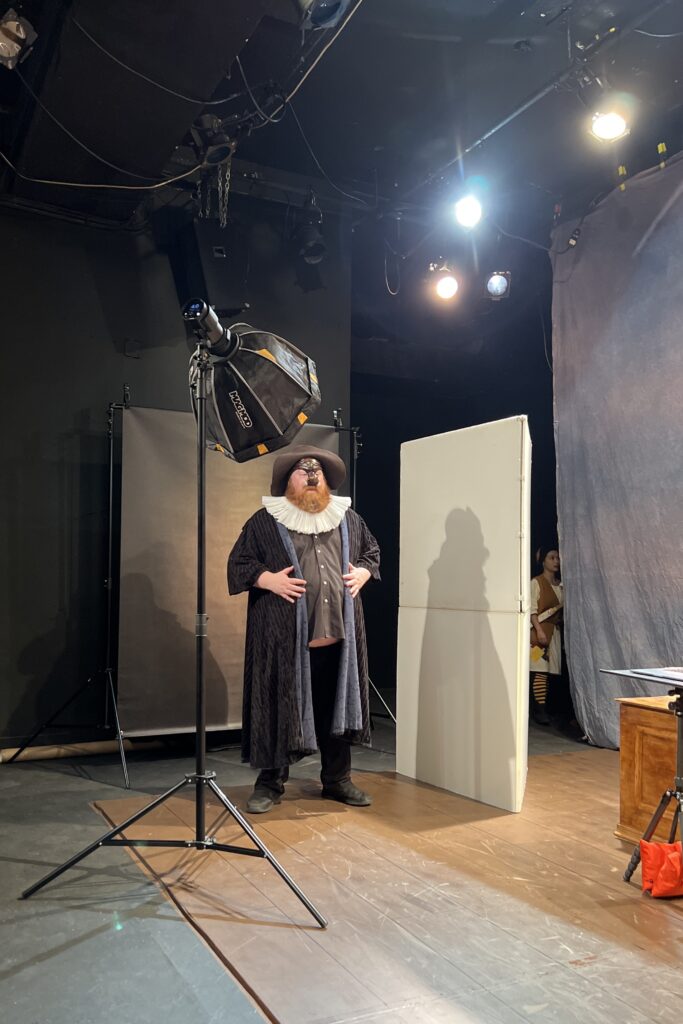
In editing, we went with a painterly look and stuck to earthy yellow, green, and brown hues that for me evoked a classical aesthetic. I used Laura Sheridan’s brilliant paint crackle textures from her “A Time Passed” collection to give them an aspect of antiquity. I bought the textures specifically for this project, and I couldn’t be more pleased with their quality and the variety they offer.
Extras
For the characters whose faces were behind masks, I thought it might be fun to do some portraits with the actors holding their masks. Here we have Laughing Stock’s company manager Shea Lee and artistic director Claire Proepper.

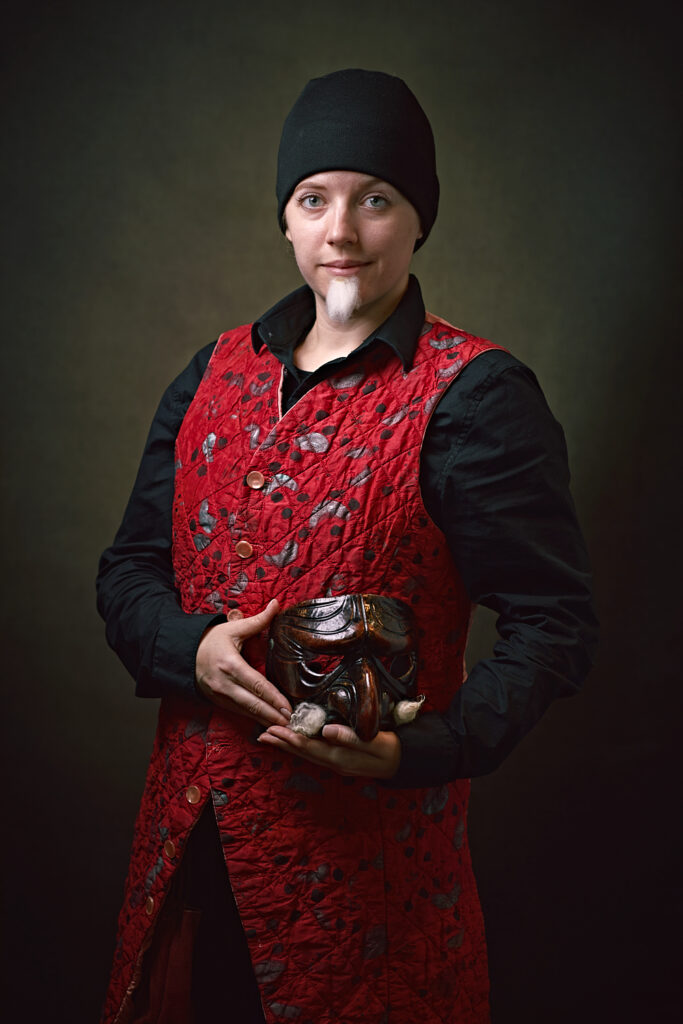
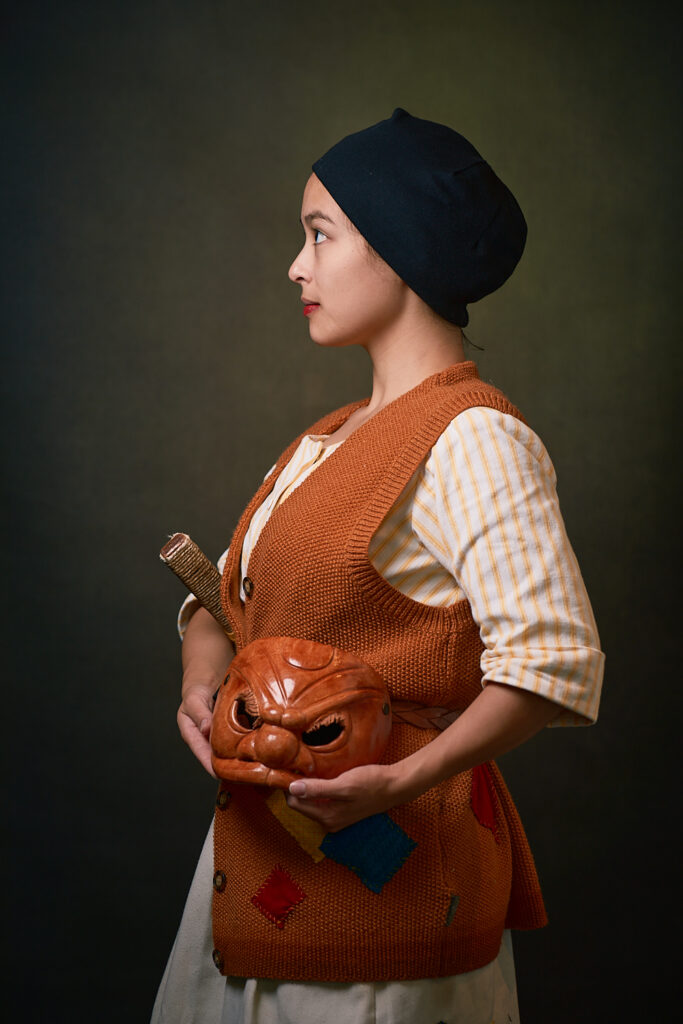
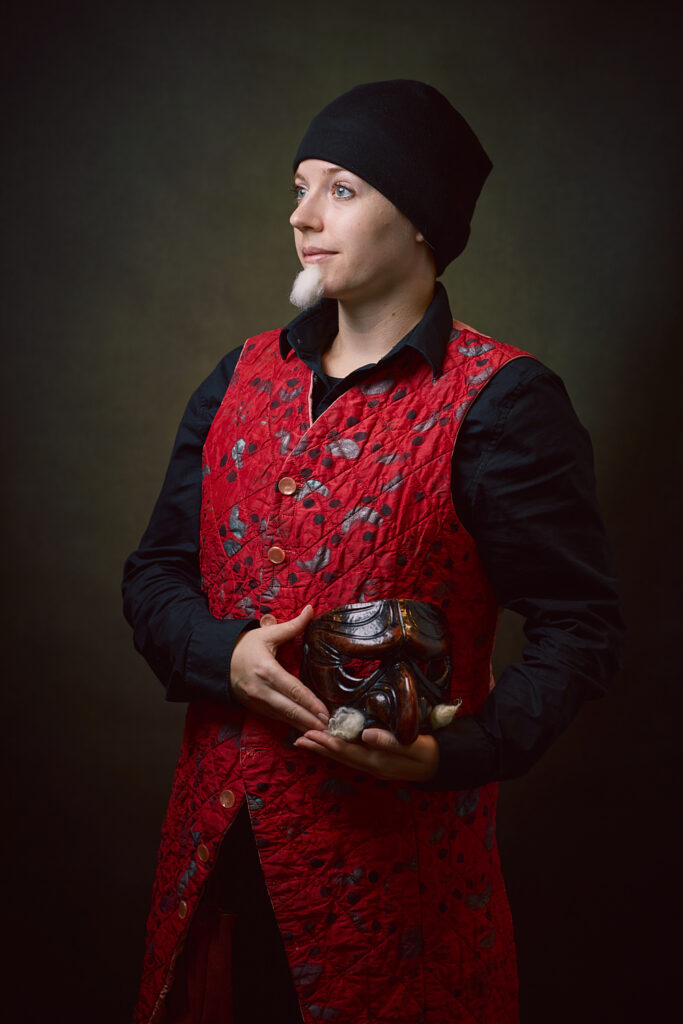
RIGHT: Laughing Stock artistic director Claire Proepper.
And Furthermore…
Laughing Stock’s Over My Dead Body; or, How to Redistribute Generational Wealth is a special show I was happy to create portraits for, and which I hope to see again before it closes. It was a special project for Distant Era as well, and I am honored and grateful to Laughing Stock for hiring Distant Era to photograph this work they created with maestro of commedia dell’arte Antonio Fava.

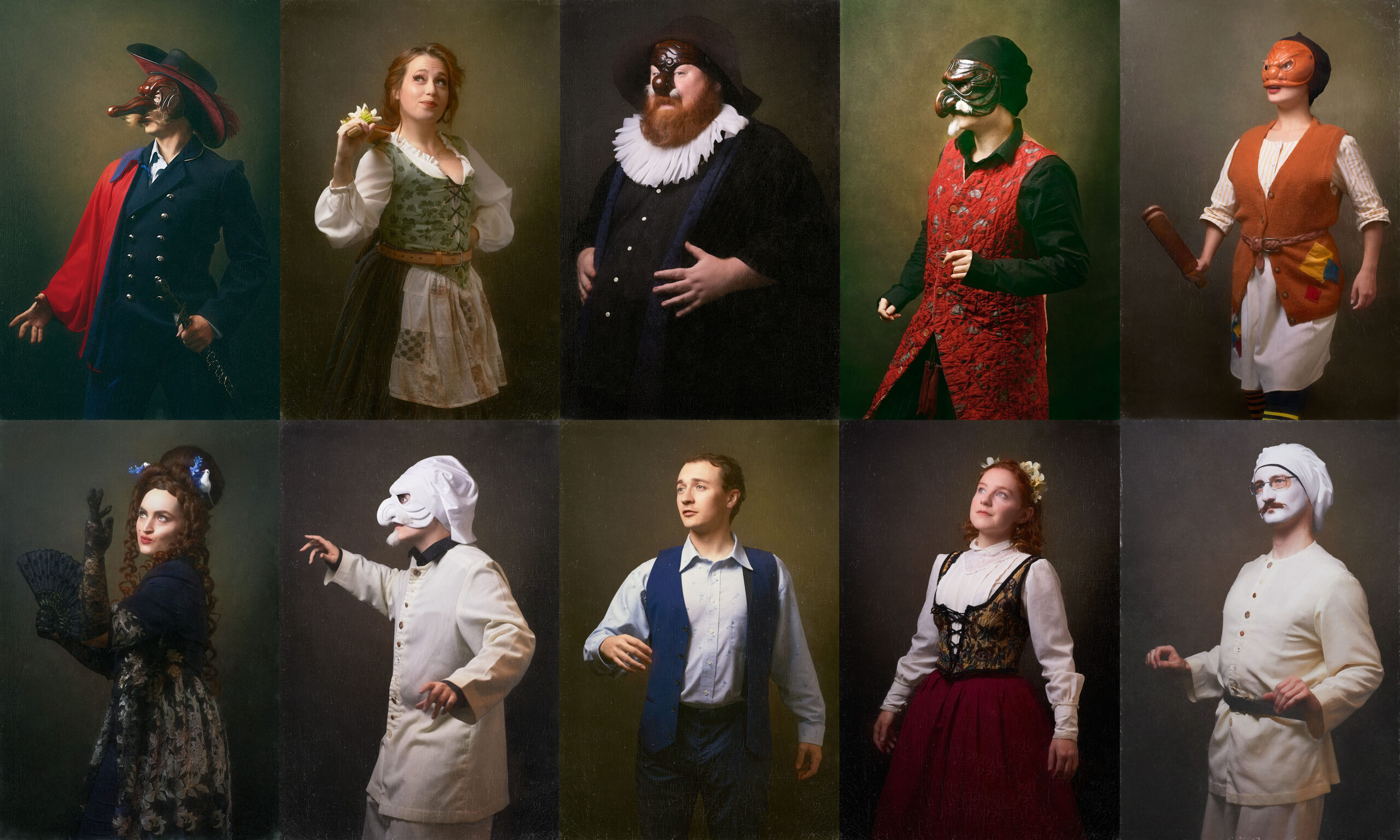

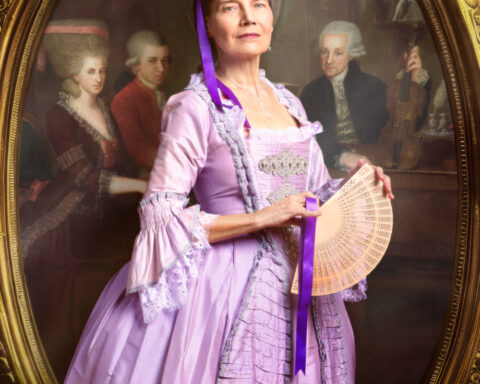
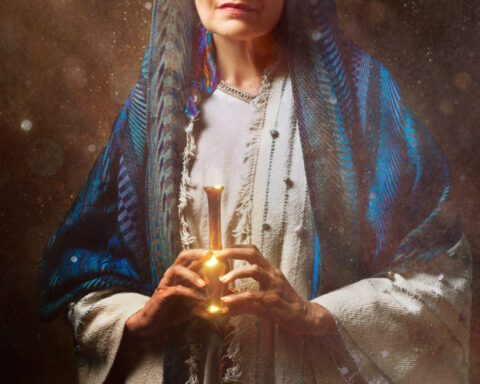

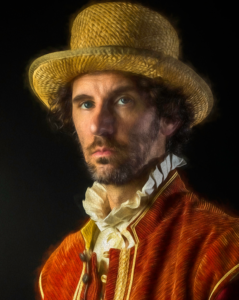

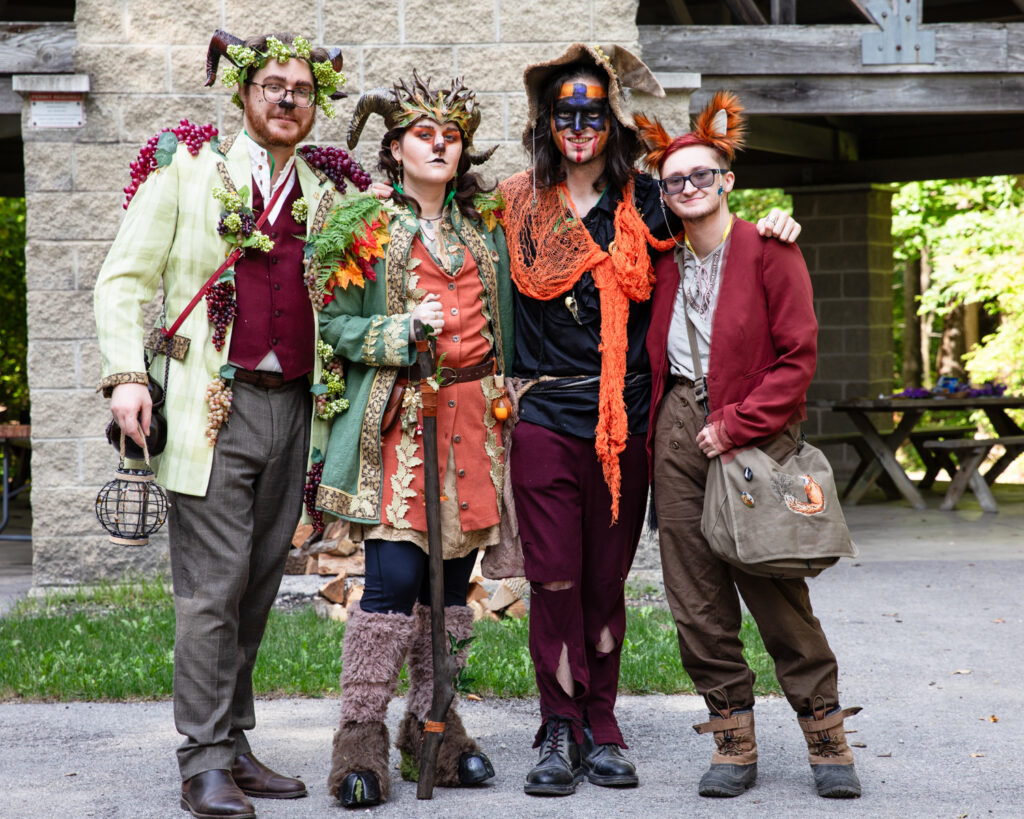
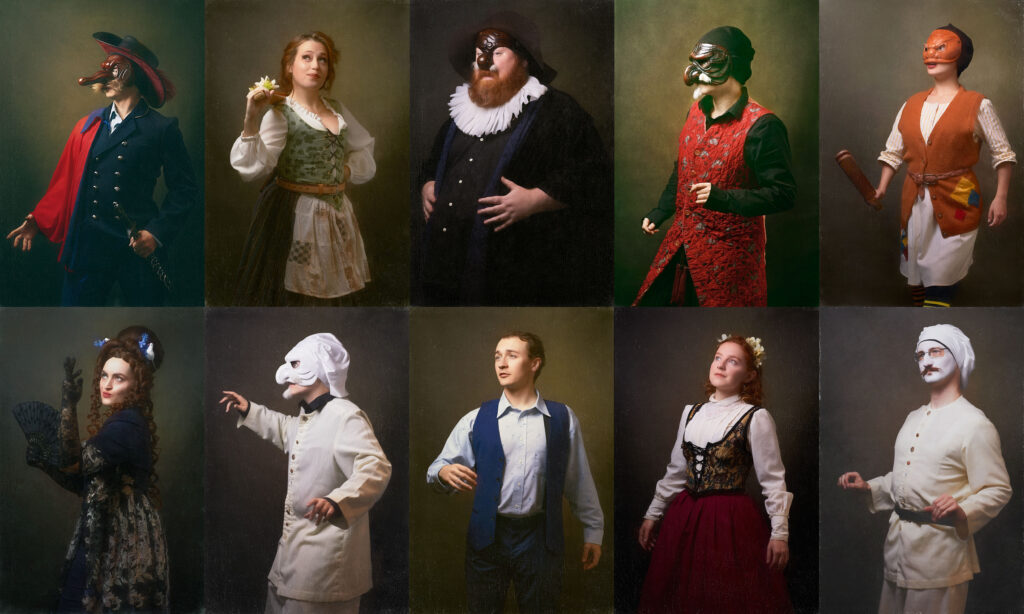
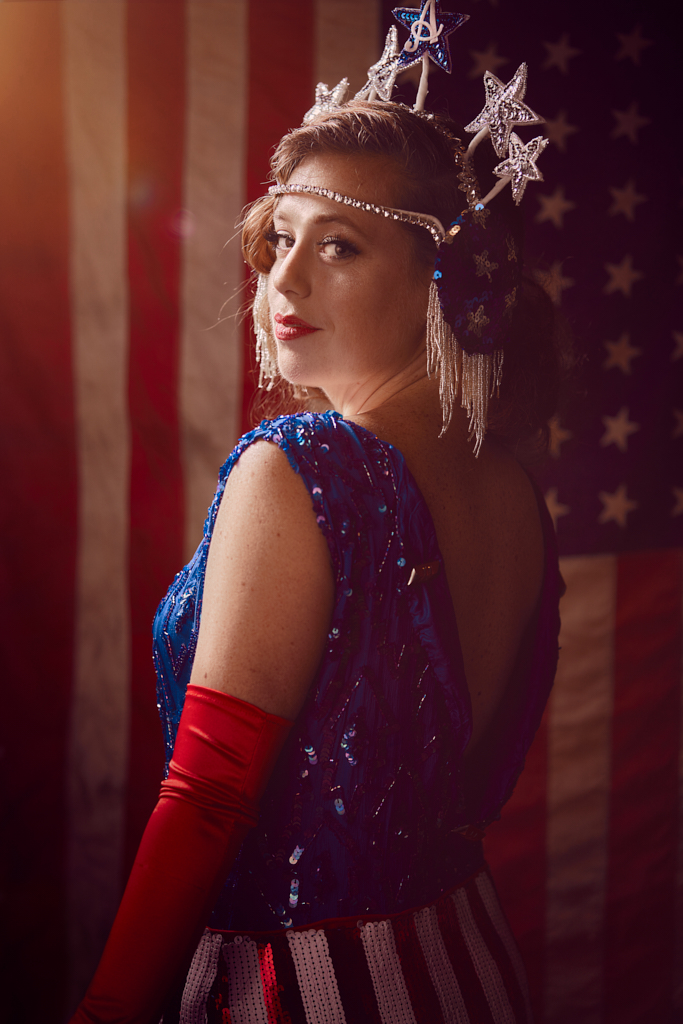
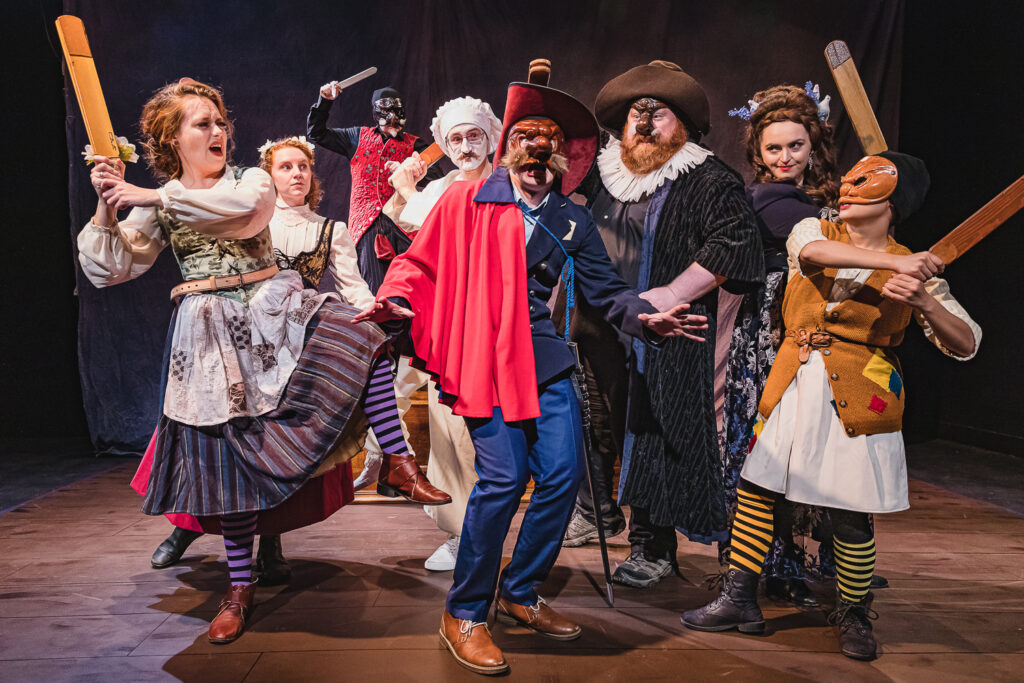


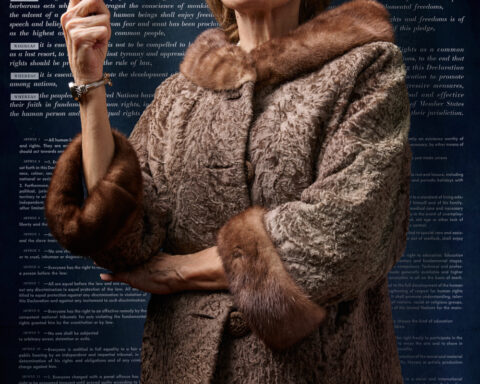
Follow Me